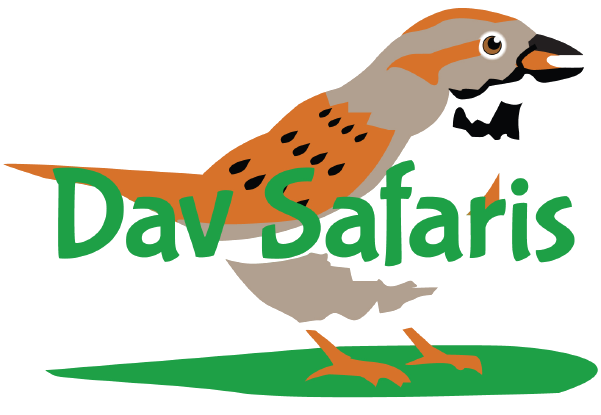A safari in Zimbabwe’s Zambezi national parks is more than just an adventure it is a journey of life time. From thrilling game drives and serene boat safaris to immersive walking tours and cultural encounters, Zimbabwe wildlife safari offers something for everyone in this remarkable corner of Africa. Located along the banks of the mighty Zambezi River, Zambezi National Park offers an unforgettable Zimbabwe wildlife safari experience, blending awe-inspiring natural landscapes, abundant wildlife, and rich cultural encounters. The Zambezi region is synonymous with wild beauty and adventure. The park is characterized by an incredible diversity of habitats from savannahs and wetlands to riverine forests and rugged escarpments. The Zambezi River, one of Africa’s mightiest waterways, not only shapes the landscape but also supports an impressive array of wildlife. The park's unique ecosystem supports an impressive array of flora and fauna, including iconic species such as elephants, buffalo, and the elusive leopard. With its rich biodiversity and stunning scenery, Zambezi National Park provides a perfect backdrop for unforgettable Zimbabwe wildlife safari encounters and immersive experiences.
Top Safari Activities in Zambezi National Park on Zimbabwe wildlife safari
Game drives safaris
No safari in Zambezi national park is complete without a classic game drive. Early morning and late afternoon drives provide the best chance to see animals in action. As the golden light bathes the landscape, you may encounter majestic elephants, stealthy predators like lions and leopards, and herds of graceful antelope. These drives are more than just a chance to see wildlife; they offer an intimate glimpse into the daily rhythms of nature. With some of Africa’s most elusive big cats roaming the area, your guide’s expert knowledge is key in tracking these masters of camouflage.
Boat safaris on Zambezi River
The Zambezi River itself is a playground for those looking for a different kind of adventure. Boat safaris and river cruises provide a unique perspective on the region’s wildlife and landscapes. Drifting along the mighty river, you can witness hippos wallowing in the shallows, crocodiles lurking beneath the surface, and a plethora of bird species making the river their home. The river is a magnet for wildlife. Watch as elephants come to drink at the banks and crocodiles bask in the sun. Unlike the fast pace of a game drive, boat safaris offer a slower, more reflective pace. It’s a time to absorb the tranquility of the river and the subtle sounds of nature.
Birdwatching
Zambezi National Park is a paradise for bird enthusiasts, boasting over 400 species. Whether you’re an experienced birdwatcher or just starting, the park offers a rich variety of avian life, from vibrant kingfishers to the striking African fish eagle. Grab your binoculars and take a moment to appreciate the beauty and diversity of the bird species that call this park home.
Guided Walking Safari
For those seeking a more immersive experience, guided walking safaris provide a unique opportunity to explore the parks on foot. Accompanied by experienced guides and rangers, you'll navigate through the wilderness while learning about the intricate ecosystems that sustain the wildlife. Walking safaris allow you to appreciate the smaller details often missed during game drives, such as animal tracks, bird calls, and fascinating plant life. It's an exhilarating way to feel truly connected to nature while ensuring your safety under expert supervision.
Go Fishing on the Zambezi
For avid anglers or those looking to try something new, fishing on the Zambezi River is an exciting activity. The river is famous for its tiger fish—considered one of the most challenging freshwater fish to catch due to its strength and agility. Fishing trips can be arranged with local guides who provide equipment and share tips on how to reel in a big catch. Whether you're an experienced fisherman or a beginner, this activity offers a relaxing way to enjoy the river's beauty while testing your skills.
Visit Victoria Falls
While not technically within Zambezi National Parks, Victoria Falls—a UNESCO World Heritage Site—is located nearby and is often included in safari itineraries. Known locally as "Mosi-oa-Tunya" or "The Smoke That Thunders," this natural wonder is one of the largest waterfalls in the world. Visiting Victoria Falls offers a chance to marvel at its sheer power and beauty while engaging in activities such as guided tours, helicopter flights, or even bungee jumping for thrill-seekers.
How to Get to Zambezi National Park
For those flying in, the nearest major airport is Victoria Falls International Airport, which welcomes flights from various international destinations. Once you’ve landed and soaked in the awe-inspiring views of the falls, you can hire a taxi or arrange for a shuttle service to take you to the park entrance, which is approximately an hour's drive away.
If you're feeling adventurous, the roads leading to Zambezi National Park wind through picturesque landscapes, offering the chance to spot wildlife along the way. Keep your camera handy, as you might catch glimpses of elephants, antelopes, or even the occasional lion lounging in the sun?
When is the best time to visit Zambezi national parks in Zimbabwe wildlife safari
The best time to visit for wildlife viewing largely coincides with the dry season, which spans from May to October. During this period, the landscape transforms into a stunning tableau of golden grasses and sparse foliage, making it easier to spot the diverse array of wildlife that calls this park home.
Why book a safari in Zambezi national parks in Zimbabwe wildlife safari with Dav safaris
Dav Safaris brings years of expertise and a deep understanding of the Zambezi region, providing tailored itineraries that cater to your preferences. From game drives to walking safaris along the Zambezi River, you’ll witness iconic species such as elephants, lions, leopards, and hippos in their natural habitats. Their knowledgeable guides ensure your safety while offering insightful commentary about the region’s flora, fauna, and conservation efforts.
